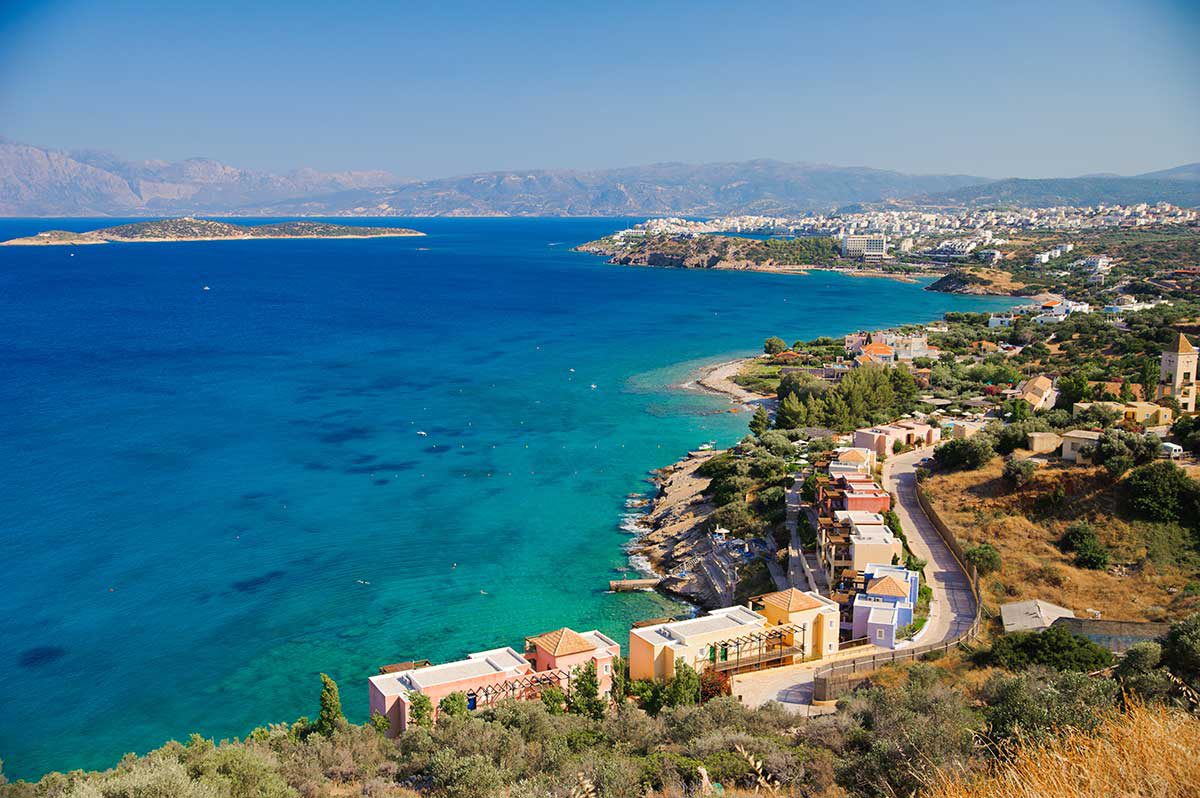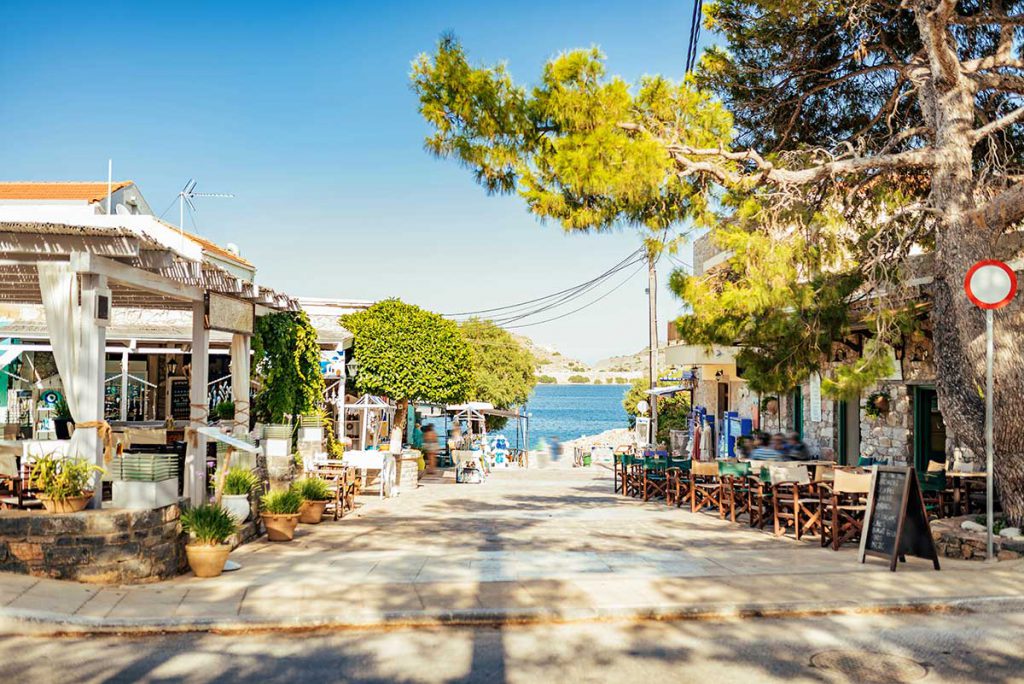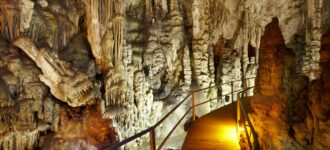
Elounda, a small coastal town with an indigenous population of less than 2500, defies easy categorization. It flaunts several luxury resorts and high-end hotels and attracts the rich and famous in secret escapes priced at a whopping 10000€ per night or more.
The settlement encompasses seven villages, with Schisma being the central and most populous of them, followed by Mavrikianon, Epano Elounda, Kato Elounda, Kato Pine, Epano Pine, and Agia Paraskevi. The uninhabited Kalydon island area belongs to Elounda, too. Here you will find the mysterious Spinalonga islet with its Venetian fortifications.
Elounda enjoys an idyllic location overlooking Korfos Bay (or the Lagoon of Elounda), Spinalonga Peninsula, and Kolokytha islet. Even if you are unfamiliar with Victoria Hislop’s novel The Island, set in Elounda, the area’s picturesque beauty will bedazzle you. It is a romantic, enchanting backdrop for a rustic yet luxurious summer holiday on Crete Island.
Things to Do in Elounda

Sunbathing and water sports: Elounda is a quaint destination. You can take it easy here, basking in the sun and admiring endless thalassic views for days. Next to the harbour, you will find the resort’s central beach, which is well organized, with showers, sun loungers, umbrellas, restrooms, and lifeguards on duty during the tourist season. In addition, there is a large playground for children and a water sports centre offering jet skis, paddle boards, SUP, and fly fishing, among others. The water is shallow, clean, clear, and safe for swimming and snorkelling.
Enjoy fresh local fish and seafood: Many exceptional tavernas in Elounda serve catch-of-the-day fish and Greek mezzedes. Some face the waterfront, giving you a relaxing setting to dine al fresco, accompanied by the soothing murmur of the waves crashing against the shores and caressed by the salty breeze.
Walk around the countryside: You can also adventure hiking. The traditional villages close to Elounda offer plenty to see if you enjoy nature and rustic landscapes. For example, Plaka is less than a ten-minute drive from Elounda, 16 km north of Agios Nikolaos – another destination you should not miss during your vacation on Crete Island.
Take a ride on the Little Train: You can explore more in a shorter time with the Little Train (or the Fun Train). The pick-up point is next to the children’s playground on Elounda Beach. They offer daily tours taking you from Elounda to Plaka, Katselio, Selles, and back. The train stops long enough for you to enjoy the vistas and take pictures.
See the Elounda windmills: While windmills are not unusual in this part of Crete, on the Elounda salt pans, you will see Xetrocharis circular mills built to turn as the wind blows. They differ from the windmills that populated the wind farm on the Lasithi Plateau in the 1950s.
Visit Elounda’s salt pans: The Venetian salt pans on the road connecting Elounda with the Kolokitha peninsula near the ancient city Olous functioned until 1972. The walls of the pits are visible in the salt lake, and many people confuse this site with the ruins of the ancient Olous.
See the ruins of ancient Olous: If you enjoy snorkelling, you can see the ruins of Olous, sunken under the Sea of Crete. The city, inhabited from the Minoan until the Byzantine era, was one of the most important cities of ancient Crete, with a population of over 30000. It had connections to Knossos and Rhodes Island. Olous minted a coin with the effigy of Britomartis, the Cretan goddess of mountains and hunting.
Admire the mosaic floor of the Early Christian Basilica of Elounda: Unearthed during excavations in 1937 and 1960, the Early Christian Basilica of Elounda (site Poros) dates from the 5th century AD. Only its mosaic floor survived in excellent condition: you can see geometric patterns and representations of dolphins and peacocks.
Walk around the ruins of the early Christian Basilica of Kolokitha: Another fine example of 5th-century AD Christian architecture is the Early Christian Basilica of Kolokitha. Unfortunately, pirates destroyed it – that’s why today you can only see scattered pieces of marble capitals and parts of the mosaic floors.
Take a boat trip to Spinalonga: A popular tourist attraction in this part of Crete, Spinalonga flaunts a fine example of Venetian architecture. Engineer Genese Bressani designed the island’s fortifications, which were critical in defending the Venetian trade routes. After the Venetian rule, Spinalonga’s fort and blockhouses were a refuge for Christians escaping the persecution of the Ottoman Turks. Then, the island fell to the Turks, and in the 20th century, it was used as a leper colony (from 1903 to 1957). Today, Spinalonga is uninhabited. Boats depart from Elounda every hour, so you can easily find a tour.
Elounda is one of Crete’s most luxurious destinations; therefore, accommodation in the area will be pricier than in other coastal towns. Choose a hotel you can afford and visit Elounda for its picturesque beauty, history, and a trip to the mysterious Spinalonga island.





